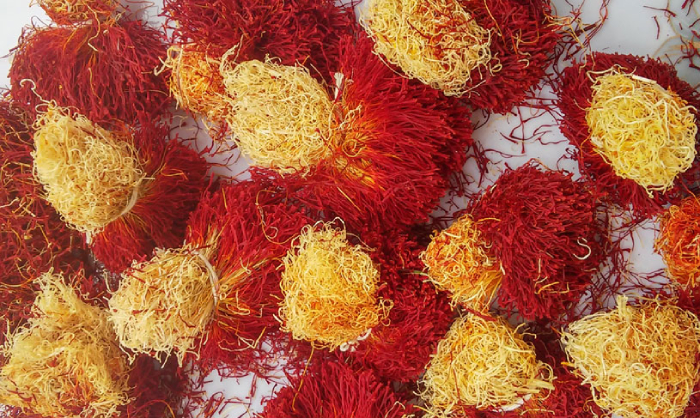
Saffron Health Benefits: From Skincare to Diabetes
Saffron Health Benefits: From Skincare to Diabetes
In our second post on saffron health benefits, we will delve deeper into the properties of the precious spice to gain a better understanding of the reasons why the Golden Spice should be consumed, not just because of its odor and color, but because of its benefits for our body.
Saffron has been used in herbal medicine for over 2,500 years. The food additive is a valuable source of minerals such as potassium, copper, manganese, copper, iron, zinc, selenium, and magnesium. Moreover, the herb contains vitamins that are essential for our health, including vitamin-A, folic acid, vitamin-C, riboflavin, and niacin.
In the previous post, we discussed how saffron can improve mood, fight cancer, serve as an antidepressant and an aphrodisiac, help treat mental impairments, used for hair and skincare, result in weight loss, and enhance immunity. In this post, we will discuss some other health benefits and expand on the previously mentioned merits.

Strengthen Your Bones
Recent scientific research has shown that saffron can help improve bone strength. Although the study has been conducted on rats and more research is required to confirm the findings, the results showed that saffron can prove effective in maintaining the health of women’s bones after menopause. Following menopause, the decrease in estrogen levels can lead to arthritis and osteoporosis and the consumption of saffron could prevent the progression of these conditions in elderly women and promote healthy bone cell growth.
Fight Diabetes
As stated before, saffron is rich in manganese, which is responsible for regulating blood sugar levels. By using saffron, one can balance their insulin and glucose levels and prevent type II diabetes, or manage its symptoms. With the lifestyle of people changing more and more after the industrial revolution, the number of people developing this condition has been on the rise.
Improve Your Eyesight
One of the non-volatile active components of saffron is crocin, responsible for the golden-yellow color of the Crocus Sativus’s stigmas. This component dilates the vessels that carry blood to the eyes, subsequently improving vision in those who are experiencing visual impairments due to old age.
Pain Management
The red gold has historically been used in herbal medicine to manage pain. The spice used to be mixed with opiates and other substances to relieve pain. Although science has not yet proved that saffron is of value in easing pain in humans, research on rats shows that certain types of pain, like neuropathic pain, can be reduced with the consumption of saffron. The spice was also tested on mice with morphine withdrawal symptoms, and the herb managed to reduce the pain sensitivity of the animals.
Saffron contains more than 150 chemicals and although more research in the future can tell us more about the extent of saffron’s benefits, for now, people are using the spice as itch cream, tablets, scar removal cream, or simply mix it with tea to enjoy its nutrients.